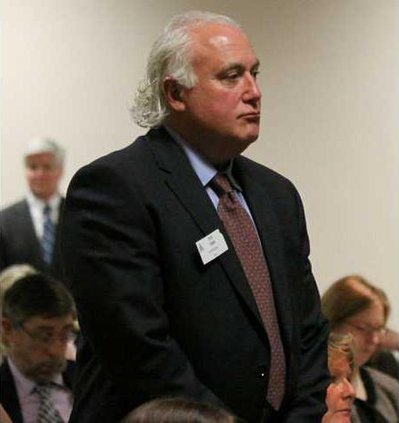By Dave Ranney
KHI News Service
TOPEKA — A task force charged with coming up with a plan for reforming the Sexual Predator Treatment Program at Larned State Hospital has agreed to spend another month developing its recommendations.
“We’ll push it to the end of June,” said the group’s chair, Wes Cole. “We’ll try to meet with (Kansas Department for Aging and Developmental Services) Secretary (Shawn) Sullivan in July.”
Initially, the task force, which met here Monday, was expected to submit its report to KDADS by the first week in June.
“We have a lot of work yet to do,” Cole said.
In the past 18 years, almost 250 men have entered the treatment program as the result of a judge’s order after being convicted for sex crimes and completing their prison sentences. But only four have been released and at least 17 have died while being held in the program.
The program’s residents are civilly committed using a legal process similar to the one used to send people to one of the state’s mental hospitals after being declared a danger to themselves or others.
“This is not a program that inspires hope,” said Rick Cagan, a task force member and executive director of the National Alliance on Mental Illness-Kansas.
The task force members spent much of the four-hour meeting discussing the Larned program’s design and the approaches other states use to manage sex offenders.
Jerry Rea, superintendent at Parsons State Hospital and a task force member, described a recent Wichita State University report that noted how some states’ treatment programs were prison-based and relied on parole officers to keep track of those who exited the program.
The vast majority of these programs, he said, required persons considered sexual predators to wear an electronic, geo-monitoring anklet after release into the community, enabling authorities to track their whereabouts. The released sex predators also were required to meet regularly, in person with parole officers.
The success of the programs was difficult to measure, Rea said, because sex offenses often go unreported. He also cited a 1987 study that found that, on average, child molesters and rapists had committed 30 offenses prior to being arrested. Those arrested for so-called “hands-off crimes,” including window peeping, flashing, or obscene phone calls, had committed 150 offenses before being caught.
Rea said some of the findings from the 26-year-old study may not be as valid today.
Still, he said, “recidivism is difficult to detect.”
To accurately measure a treatment program’s success, he said, might take 25 or 30 years. Kansas launched its program 18 years ago.
Cagan said he shared Rea’s concern but wondered how sex offenders’ recidivism rates compared to those for “murderers or bank robbers.”
His question went unanswered.
“What this all comes down to, I think, is what’s the public’s tolerance for recidivism?” Cagan said. “Are we looking for zero percent? Because If we are, there’s no way to guarantee that.”
Cagan said he thought the Larned program’s design might be “decent,” but the “…spirit and manner in which it’s executed are suspect.”
He said he’d interviewed a Larned worker last fall who told him that during her orientation period she was told that the program’s residents were “bad guys” and would never be released.
“It’s not a recovery program when you’re telling your staff that it’s a dead end,” he said.
Cagan said he would propose moving part or all of the treatment program to either Kansas City, Topeka, or Wichita.
“We have a real HR (human resources) problem with the program being in Larned,” he said. “On one hand, we have limited access to qualified staff, and on the other hand it’s hard to come up with a good exit strategy when you’re not close enough to any real job markets.”
Task force members agreed to each submit a one-page list of proposed reforms and to use the next two meetings, on June 10 and June 24, to finalize their report.
Task force member proposes changes in sex treatment program at state hospital




